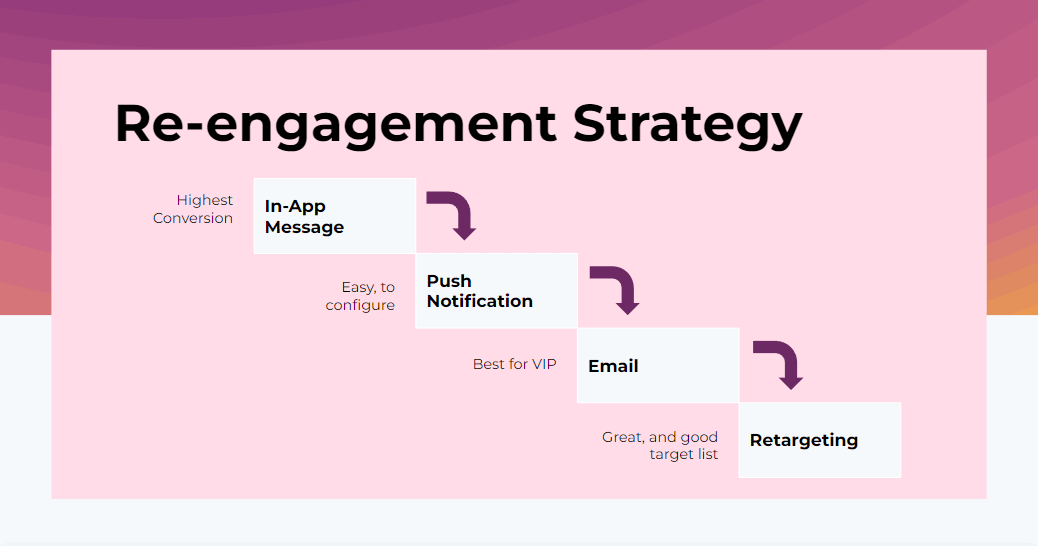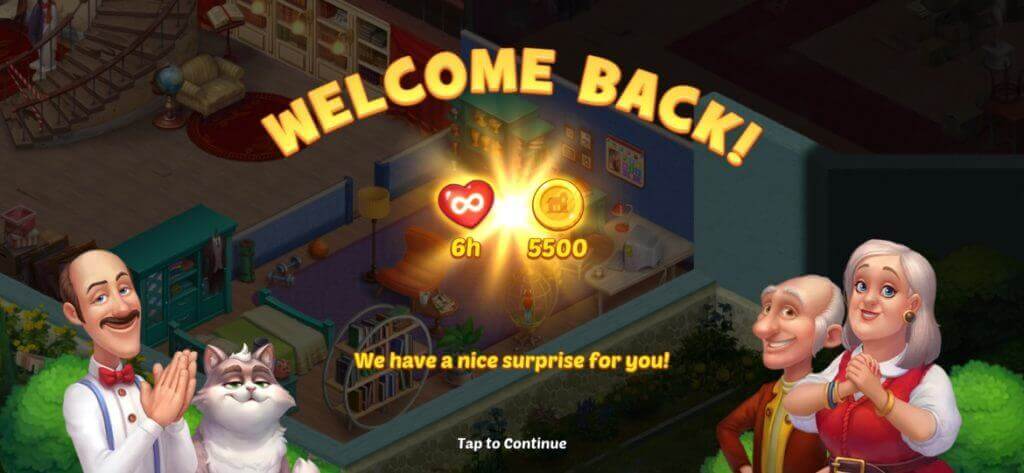Personalization is a powerful way to increase user engagement, retention, and monetization for gaming apps. By tailoring the app experience and messaging to each player’s preferences, behavior, and context, gaming app marketers can create more relevant and satisfying interactions that persuade players to launch the app or make an in-app purchase, or join a live event.
But what are the actual personalization use cases that have the biggest impact on player loyalty and revenue? Let’s look at some examples.
Personalizing Lifecycle Marketing for Gaming
When we talk about using personalization to boost retention and revenue for gaming apps, the largest area where that happens is in lifecycle marketing. That means being able to optimize your activation, engagement, and retention across the entire player lifecycle — from the first touch point all the way to onboarding and then into high player engagement, even re-engaging players who have become dormant.
Typically, the best strategies in lifecycle marketing align with a waterfall of engagement that happens in the following sequence and across the various channels available.

Lifecycle marketing strategies align with a waterfall of engagement that happens in the following sequence.
In-App Message: The Highest Converting Channel
You start off with in-app messaging because it’s your most important channel when it comes to re-engagement.
That might sound counterintuitive because most people think re-engagement is bringing players back who’ve already stopped playing the game. But by then it’s already too late. No player ever stopped using a gaming app cold turkey. Instead, there would’ve been a downward progression of disengagement in their playing pattern.
So the moment you notice that a formerly active player has started to disengage, that’s when you should re-engage them with a lapsed player gift. Typically, this means giving them boost items, unlimited lives for a limited time, or other useful things as a one-time gift.

An example from Homescapes: this is a welcome back in-app message with a surprise upon app start after not playing for a week.
You should personalize the gift based on the kinds of things that the player used to like — a type of weapon they used, a character they enjoyed using, a boost item they used most often — basically, remind them why they need to come back! Or there may be new content in the app relevant to what they used to play and enjoy. The point is: it must be appealing enough to get the player to return to a more regular playing pattern.
This type of in-app message, the lapsed player gift personalized to the player’s history, is one of the highest converting campaigns you can ever run. And it’s your first line of defense when you’ve detected a declining usage pattern.
Push Notification: The High Volume Workhorse
Now, the next layer in the waterfall of engagement is the push notification. This is your workhorse when it comes to re-engagement since it’s where you’re going to send the highest volume of messaging.
Through push, you have the ability to reach out to players who are inactive or are not currently in the game, and send them personalized messaging to:
- Announce the live events happening within your game that your player is likely to enjoy based on previous attendance
- Inform players of new features or new content you’ve just released and which the player has historically interacted with
- Promote offers or sales that your player has purchased from before
- Give players their social messages from their in-game network
- Convince new players to register and activate their accounts
- Onboard new players with relevant information about your game, including short tutorials
- Invite players to progress to the next level or do the next action

An example of a push notification for a live event within the player’s physical location.
Remember that the key to push notifications that engage is to personalize them to each player’s preferences and past behavior.
Email: Gaming’s Most Underutilized Channel
Here’s a fun fact about email based on many interviews we’ve conducted with gaming studios: for whatever reason, email isn’t considered an important channel in much of the gaming space.
Half of the studios we talked with don’t even collect the email addresses of their players! The ones that do, often don’t leverage email because they don’t think of email as an engagement channel.
But the minority of studios that do use email as a marketing channel? They’re very successful with it.
The best use of email in gaming is for VIP re-engagement. VIPs have already bought into your game: they’ve been playing for a while and have probably been spending real money to play it, becoming part of the game economy. Sending them an email reminding them about the game they’ve invested so much time in is a powerful way to bring them back. Plus, longer form, richer content can’t be done in a push notification — you can only do that in an email.
And when you personalize the email content to the VIP’s likes and in-game behavior, you’re engaging one-to-one, inviting them back into your app using the same tactics as for push notifications — offers, sales, live events, new features/content — but with the ability to go longer, to embed rich media.
Retargeting: Gets More Difficult Everyday
The last line of defense for getting inactive users is using retargeting tools outside of the app. For example, retargeting through ads on Google, Facebook, and more. The objective of ad personalization is to predict how relevant an ad will be to a specific player, allowing marketers to individualize the ad to a player’s preferences and potential customer journey stage.
Personalizing retargeting ads can run the gamut from simply including location, general interests, and demographic details, all the way to purchase history and historical behavior on the app.
The only drawback with this channel is all the changes happening within the sphere of user privacy — ranging from GDPR to App Tracking Transparency to users simply opting out of ads — making it steadily more difficult to retarget your audience.
Player Personalization: This is the Way
In today’s digital age, gaming apps have to turn to marketing personalization to connect with players on a deeper, more personal level. Particularly in the gaming industry where competition is fierce and players can instantly find other engaging experiences. By leveraging user data and tailoring lifecycle marketing efforts to individual players, game developers can improve player retention, increase engagement, and ultimately drive revenue growth.

Momchil Kyurkchiev 
Heads North America Region. Expert in multi-channel customer engagement & co-founder of Leanplum.
Free Customer Engagement Guides
Join our newsletter for actionable tips and proven strategies to grow your business and engage your customers.














































